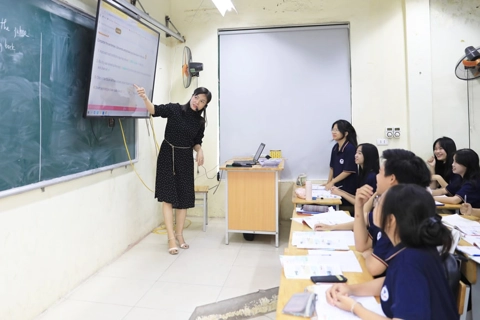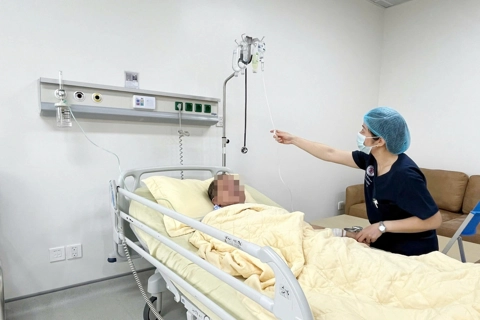Social Affairs
A report on smoking, dining, and exercise patterns in Hanoi
Feb 24, 2018 / 01:13 PM
Vietnam is fogging up. No, it is not the pleasant morning mist nor is it the delicate steam from the newly cooked bowl of pho. It’s the smoke. The smoke of 21 million people huffing and puffing on their daily allowance of tobacco. It is an endemic-epidemic of sorts.
Smoking is a world-wide issue that is teetering between banishment and acceptance. Sure, it has its position as a common good in most communities, but can we really completely disregard the threats it poses to human health? Vietnam is a particularly heavy smoking nation with 22.5% of its general population smoking more than half a pack per day on average.
Needless to say, it is a problem. A dire one too. As if the unusually high rate of lung and heart cancer was not enough, four of the top 6 causes of death in country may be attributed to smoking. The nicotine, tar, and hundreds upon hundreds of carcinogens usurping the place of healthy cells does not forebode well. But this is old news. We all know that smoking is a ticking time bomb for health. A recent edition of Vietnam News, just a year ago, showed that there were 22,000 lung and/or heart cancer patients in Vietnam annually, with 95 percent of them failing to defeat the disease.
Exploring the reasons behind this particular phenomenon, I came across a fascinating fact. Statistics show that the Vietnamese population is actually on the lower end of the obesity parameter. A Vnexpress article specified the ranking of Vietnam in the world when it comes to obesity, and showed it placed last of the countries researched, making it the least obese state in the world. This is not a surprise if you have lived in or visited this nation and could be attributed to the local diet and exercise habits. The centerpiece of Vietnamese cuisine is rice, noodles, and vegetables. Dissimilar with their flour counterparts, rice noodles bear significantly far less calories than pasta of the same mass. Rice noodles have approximately 30 less calories than a wheat or flour variant in a sample of 100g. This means in the long run a Vietnamese person would suffer less calorie-dense health related sequelae. The fiber and protein concentration of these rice products also promotes intestinal health.
Another key trait of Vietnamese dining is the affluent supply of vegetables keeping the population in good health. For every kg of noodle consumed, roughly the same is eaten in vegetables. Vietnamese “Balm” is a unique one amongst the many greens. A sort of mint, the native herb of Vietnam has been shown to enhance body hormonal circulation and may even repel bug bites. Although the staples of the Vietnamese diet are less calorie dense, the local dishes are not without health risks. For example, sugar and sodium content of many dishes are higher than daily recommendations for these nutrients. “Bun cha” for instance has a high sugar concentration, which can lead to increased risks of Type II diabetes. If it was only problematic in this one local dish, it may not have increased the number of diabetic patients in recent years.
However, there are other culprits that contribute to a foreseeable increase in high blood sugar and cholesterol: fast foods. The rapid urbanization in the major cities of the SouthEast Asian country brought along with it chains of fast food manufacturers known for their cheap prices. This attracted many civilian customers to their doors. For example, Lotteria, a Korea-based burger franchise, made home in Vietnam with the most number of venues in the nation with 211 dispersed over 30 provinces. Easy access to these fast paced vendors could attract customers and drive them to return, raising the risk of diabetes for regulars. Afterall, Diabetes is one of the top causes of death in Vietnam.
Does this mean if we cut smoking, sugar and sodium we are “good to go”? Not quite. Plenty of Vietnamese citizens enjoy exercising along the stretches of Tay Ho or Hoan Kiem in Hanoi. An applaudable cultural practice, which inspires other nations to employ such tactics for their own communities. However, the people are exposed to a health hazard, which goes unseen. Air pollution, which is literally invisible unless in a plume of smoke, enters the lungs and hearts of citizens on the sidewalk. This, of course, is not a good sign. Runners here for instance might work to enhance their strength, but they are unknowingly cutting away their stamina due to pollution. Little known fact, personal acquaintances of mine have testified that their average running times decreased when they started running in Hanoi.
Despite these conditions, most Vietnamese people prevail in keeping up their own personal health. However, education and information have not reached the community fully, and practices like smoking have yet to be tackled. What could be done to further promulgate the methods and reasons to maintain one’s own well-being? Have there been previous projects or campaigns to fulfill this mission? There certainly have. There are tidal waves of change roaring past. For instance, anti-smoking policies have been put in place as of 2014, passed near unanimously by Congress, which have shown some positive outcomes.
In addition, the World Health Organization (WHO) launched a multimedia awareness campaign to prevent health crises. As for diabetes, a well-established institution called Vietnamese Association of Diabetes and Endocrinology (VADE) has been working overtime since its creation in 2001 to eradicate diabetes and its complications in collaboration with local hospitals and health centers. Vietnam is on its way to a clog-free life; whether it is clogging of the heart or lungs, its quest for improved health continues.

The smoke of 21 million people huffing and puffing on their daily allowance of tobacco. It is an endemic-epidemic of sorts
|
Exploring the reasons behind this particular phenomenon, I came across a fascinating fact. Statistics show that the Vietnamese population is actually on the lower end of the obesity parameter. A Vnexpress article specified the ranking of Vietnam in the world when it comes to obesity, and showed it placed last of the countries researched, making it the least obese state in the world. This is not a surprise if you have lived in or visited this nation and could be attributed to the local diet and exercise habits. The centerpiece of Vietnamese cuisine is rice, noodles, and vegetables. Dissimilar with their flour counterparts, rice noodles bear significantly far less calories than pasta of the same mass. Rice noodles have approximately 30 less calories than a wheat or flour variant in a sample of 100g. This means in the long run a Vietnamese person would suffer less calorie-dense health related sequelae. The fiber and protein concentration of these rice products also promotes intestinal health.
Another key trait of Vietnamese dining is the affluent supply of vegetables keeping the population in good health. For every kg of noodle consumed, roughly the same is eaten in vegetables. Vietnamese “Balm” is a unique one amongst the many greens. A sort of mint, the native herb of Vietnam has been shown to enhance body hormonal circulation and may even repel bug bites. Although the staples of the Vietnamese diet are less calorie dense, the local dishes are not without health risks. For example, sugar and sodium content of many dishes are higher than daily recommendations for these nutrients. “Bun cha” for instance has a high sugar concentration, which can lead to increased risks of Type II diabetes. If it was only problematic in this one local dish, it may not have increased the number of diabetic patients in recent years.
However, there are other culprits that contribute to a foreseeable increase in high blood sugar and cholesterol: fast foods. The rapid urbanization in the major cities of the SouthEast Asian country brought along with it chains of fast food manufacturers known for their cheap prices. This attracted many civilian customers to their doors. For example, Lotteria, a Korea-based burger franchise, made home in Vietnam with the most number of venues in the nation with 211 dispersed over 30 provinces. Easy access to these fast paced vendors could attract customers and drive them to return, raising the risk of diabetes for regulars. Afterall, Diabetes is one of the top causes of death in Vietnam.
Does this mean if we cut smoking, sugar and sodium we are “good to go”? Not quite. Plenty of Vietnamese citizens enjoy exercising along the stretches of Tay Ho or Hoan Kiem in Hanoi. An applaudable cultural practice, which inspires other nations to employ such tactics for their own communities. However, the people are exposed to a health hazard, which goes unseen. Air pollution, which is literally invisible unless in a plume of smoke, enters the lungs and hearts of citizens on the sidewalk. This, of course, is not a good sign. Runners here for instance might work to enhance their strength, but they are unknowingly cutting away their stamina due to pollution. Little known fact, personal acquaintances of mine have testified that their average running times decreased when they started running in Hanoi.
Despite these conditions, most Vietnamese people prevail in keeping up their own personal health. However, education and information have not reached the community fully, and practices like smoking have yet to be tackled. What could be done to further promulgate the methods and reasons to maintain one’s own well-being? Have there been previous projects or campaigns to fulfill this mission? There certainly have. There are tidal waves of change roaring past. For instance, anti-smoking policies have been put in place as of 2014, passed near unanimously by Congress, which have shown some positive outcomes.
In addition, the World Health Organization (WHO) launched a multimedia awareness campaign to prevent health crises. As for diabetes, a well-established institution called Vietnamese Association of Diabetes and Endocrinology (VADE) has been working overtime since its creation in 2001 to eradicate diabetes and its complications in collaboration with local hospitals and health centers. Vietnam is on its way to a clog-free life; whether it is clogging of the heart or lungs, its quest for improved health continues.








